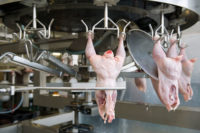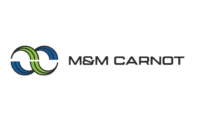Advanced Food Systems Inc.has opened a new headquarters in Somerset, N.J., housing its corporate headquarters, manufacturing operation, technical research center, applications laboratory and customer service department.
The first phase of construction includes a 72,000-sq.-ft. facility with multiple processing rooms for dry and wet blending. The technical research center and laboratory will provide research and formulation development and sensory evaluation.
When the second phase of construction is complete, the facility will have a total of 124,000 square feet. Ajinomoto U.S.A. Inc., a manufacturer of monosodium glutamate and lysine (an animal feed supplement), is constructing an 8,000-sq.-ft. technical development center near Eddyville, Iowa, the site of its current manufacturing facilities. TECUS, Technology and Engineering Center of the United States, will primarily focus on research and feasibility studies for seasoning and new product development. n RC&S (Refrigerated Construction & Services) has been awarded a contract from Polk's Meat Products to design/build a new meat processing plant in Magee, Miss. The 50,000-sq.-ft. facility will process ham and meat products. The $4.4 million facility will be completed and operational by June.
Design/builder Haskell Co. has completed a bakery for Holsum Bakery of Arizona in Tolleson, Ariz. The "green field" plant includes more than 100,000 square feet of processing, packaging and distribution facilities. Haskell also has been awarded a design/build contract for a 125,000-sq.-ft. frozen food and storage and distribution plant for Ameri Freeze in West Deer Township, Pa.
With the federal Occupational Safety and Health Administration (OSHA) targeting year-end for adoption of its workplace ergonomics standard, some consultants are urging food processors and other manufacturers to implement an ergonomics program now to take advantage of the proposal's grandfather clause.
"It is far less costly and burdensome to fashion a program that meets your own company's needs than to be forced to adhere to OSHA's intricate 'one size fits all' regulation," insists Julie M. Pacaro, a labor and employment attorney with the Philadelphia law firm Cozen and O'Connor. "Because it takes six months to a year to get an ergonomics program up and running, only employers who act now will be able to use the clause effectively." Grandfather status doesn't excuse manufacturers from satisfying the regulation's six basic elements -- management leadership and employee participation; hazard information and reporting; job hazard analysis and control; training; management of musculoskeletal disorders; and program evaluation -- but it does give them greater latitude in how they address them.
For example, written reports and formal reviews from health care providers who treat injured workers are stipulated in the regulation, Pacaro says. If an ergonomic program already is in place, a more informal approach to corrective action can be taken, saving an employer time, money and frustration.
Many observers are cool toward the grandfather provision. The National Coalition on Ergonomics, a group of business interests opposed to the standard, dismisses it as "a limited and fairly meaningless" provision. And ergonomist Joseph Selan, senior vice president of Advanced Ergonomics Inc., Dallas, fears it already is too late to create a program that improves working conditions while also providing a good return on the dollars invested in it.
"By formulating a program with an eye on the OSHA proposal, companies are going to spend a lot of money unwisely, with no significant benefit either in terms of creating a more efficient work environment or a return on investment," he cautions. Valid concerns, Pacaro concedes. Still, "it's always better not to be micro-managed by OSHA," and seizing this opportunity is relatively inexpensive. She pegs the cost of formulating an in-house program at $7,000 to $14,000, not including any physical changes that must be made. OSHA officials estimate manufacturers will encounter average spending of $150 per work station to comply with the standard.
They place the total cost of compliance at $4.2 billion. OSHA's analysis of costs by 342 industry segments ranged from $345 million for hospitals to $16,361 for fur goods firms. Estimates for the nine food-industry SIC categories are included in the accompanying chart.
Ergonomic clause could spell regulatory relief
Ergonomic compliance costs by food industry SIC category Product category Estimated cost (in millions) Meat $34.8 Dairy 8.2 Preserved fruits & vegetables 10.0 Grain mill 6.8 Bakery 12.5 Sugar & confectionery 4.5 Fats & oils

